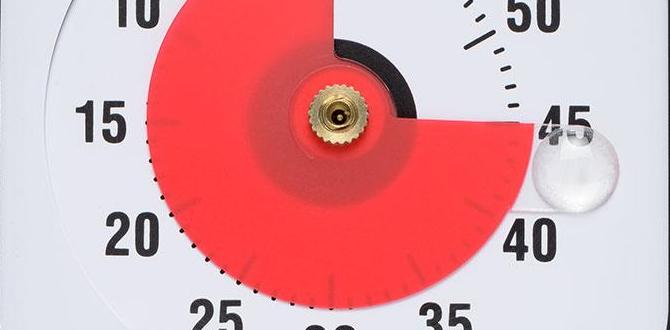For large dogs, outdoor dog fences are essential for safety and containment. Choosing the right fence involves considering height, strength, material, and installation to ensure your energetic canine stays secure in your yard without compromising their freedom.
Outdoor Dog Fences for Large Dogs: Proven Essentials for a Secure Yard
Worried about your energetic large dog exploring beyond your yard? It’s a common concern for many pet parents! Keeping a big, enthusiastic pup safe and sound is a top priority, and the right outdoor dog fence is your best solution. You want a fence that’s not just a barrier, but a reliable guardian. Don’t fret if you’re new to this; we’ll walk through everything you need to know to create a secure and happy outdoor space for your furry friend. Get ready to discover the proven essentials for an outdoor dog fence perfectly suited for large breeds!
Why the Right Fence Matters for Large Dogs
Large dogs, with their strength, size, and playful energy, have unique fencing needs. A fence that might hold a smaller dog could be no match for a determined German Shepherd on the chase or a playful Labrador leaping for joy. They require a fence that is:
- Tall enough: To prevent jumping over.
- Strong enough: To withstand pushing or leaning.
- Secure enough: To prevent slipping through gaps or digging under.
- Durable enough: To last through years of enthusiastic use.
Investing in the correct outdoor dog fence for your large breed isn’t just about preventing escape; it’s about their safety and your peace of mind. It allows them the freedom to run and play in a controlled environment, reducing the risk of them wandering into traffic, encountering unknown dangers, or bothering neighbors.
Key Considerations When Choosing a Fence
When selecting an outdoor dog fence for your large dog, several factors come into play. Think about your dog’s specific temperament, your yard’s layout, and your budget. Here’s a breakdown of what to prioritize:
Height is Paramount
Large dogs can jump surprisingly high, especially when motivated. For most large breeds, a minimum fence height of 5 to 6 feet is recommended. Some athletic breeds or those prone to jumping might even require 7-foot fencing. Always err on the side of caution; it’s better to have a fence that’s too tall than one that’s too short.
Material Matters for Durability and Strength
The material of your fence significantly impacts its strength, durability, and maintenance needs. Here are some popular options:
- Vinyl Fencing: A popular choice for its low maintenance and aesthetic appeal. It’s durable and comes in various styles, but ensure it’s reinforced for the strength of large dogs, as some can be chewed or pushed over if not thick enough.
- Wood Fencing: Offers a classic, natural look and can be very strong if installed correctly with sturdy posts and thick planks. Cedar and redwood are naturally rot-resistant. However, wood can require more maintenance (staining, sealing) and can be chewed by determined dogs.
- Metal Fencing (Aluminum/Steel): Highly durable and often a good choice for larger dogs. Aluminum is rust-resistant and relatively lightweight, while steel offers superior strength. These are often seen in decorative styles but are also available in robust, functional designs specifically for pets.
- Chain-Link Fencing: A classic, cost-effective option that provides excellent visibility and containment. For large dogs, opt for heavy-gauge chain-link (e.g., 9-gauge or lower) with galvanized or vinyl coating for rust protection. Ensure the mesh is small enough to prevent paws from getting stuck and that the posts are deeply set to prevent digging. For superior security and to deter digging, consider adding a buried wire mesh at the bottom.
- Wrought Iron Fencing: Extremely strong and often aesthetically pleasing, but can be one of the more expensive options. It offers excellent security for determined dogs.
To Dig or Not to Dig? Dealing with Diggers
Some large breeds are natural diggers. If your dog is a persistent excavator, you’ll need to incorporate measures to prevent escapes under the fence. Options include:
- Burying the fence material several inches underground.
- Installing a wire mesh skirt along the base of the fence, extending inwards or buried.
- Using L-footers (wire mesh bent into an L-shape) buried along the fence line.
Visibility and Aesthetics
Consider how much you want to see through the fence and how it will look with your home and landscaping. Solid fences offer privacy, while chain-link or picket fences provide more visibility. Many modern fencing solutions balance security with attractive design.
Local Regulations and HOA Rules
Before you purchase or install anything, check your local building codes and Homeowners Association (HOA) rules. There may be restrictions on fence height, material, and style. Getting this information upfront can save you a lot of trouble later.
Types of Outdoor Dog Fences for Large Dogs
Here’s a closer look at the most suitable fencing types for large breeds, with their pros and cons:
| Fence Type | Pros | Cons | Best For |
|---|---|---|---|
| Heavy-Duty Vinyl | Low maintenance, durable, attractive, resistant to rot and insects. | Can be chewed if not reinforced, may require professional installation for strength. | Owners seeking a balance of aesthetics and durability, less energetic fence-testers. |
| Sturdy Wood (Cedar/Redwood) | Natural look, strong, good privacy. | Can be chewed, requires regular maintenance (staining/sealing), susceptible to rot if not treated. | Owners who prioritize a natural look and are willing to perform maintenance, strong chewers with secure foundations. |
| Heavy-Gauge Chain-Link | Cost-effective, excellent visibility, strong and secure when properly installed. | Less aesthetically pleasing for some, can be climbed by very determined dogs, requires reinforcement against digging. | Budget-conscious owners, large yards, breeds prone to digging (with modifications). |
| Welded Wire / Mesh Fencing | Very secure, small mesh size prevents escapes and paw entrapment, relatively affordable. | Can be less attractive, requires robust posts, can rust without proper coating. | Highly active or escape-artist large breeds, areas where maximum security is needed. |
| Decorative Metal (Aluminum/Steel) | Very strong, durable, attractive, low maintenance, excellent for security. | Can be expensive, visibility can be a concern for some styles. | Owners who want a stylish yet incredibly secure fence, breeds with high jumping capabilities. |
In-Ground vs. Above-Ground Systems
Most traditional outdoor dog fences are in-ground installations, meaning posts are dug deep into the earth, and fencing material is attached. This provides the most robust and secure option for large dogs.
Invisible fences (in-ground or wireless) are sometimes considered. However, for large, strong, and potentially high-prey-drive dogs, these are often not recommended as the primary containment solution. A large dog might choose to endure a static correction to chase a squirrel or another animal rather than stay within the boundary. For true safety and containment, a physical barrier is generally superior for large breeds.
Installation: DIY vs. Professional
Installing a fence for a large dog is a significant undertaking. The decision between DIY and professional installation depends on your skills, available time, budget, and the complexity of the project.
DIY Installation
Pros:
- Significant cost savings.
- Sense of accomplishment.
- Full control over the process.
Cons:
- Requires physical labor, tools, and knowledge.
- Can be time-consuming.
- Mistakes can be costly and compromise security.
- Digging post holes for a sturdy fence can be very demanding.
If you choose DIY, ensure you have the right equipment: post hole diggers, shovels, level, measuring tape, concrete (for post stability), and appropriate safety gear.
Professional Installation
Pros:
- Expertise ensures the fence is strong, secure, and properly aligned.
- Saves you time and physical labor.
- Often comes with a warranty.
- Professionals can advise on the best materials and designs for your specific needs.
Cons:
- Higher cost involved.
- Requires scheduling and coordination.
When hiring a professional, get multiple quotes, check references, and ensure the contract clearly outlines the scope of work, materials, and warranty. Look for companies experienced in installing pet-specific fencing.
Essential Features to Include
To ensure your fence is truly “proven essential” for your large dog, focus on these features:
Secure Gates
Gates are often weak points. Ensure your gates are as tall and sturdy as the fence itself, with secure latches that cannot be accidentally opened by a curious nose or paw. For large dogs, self-closing gates with locks are a great safety feature.
Reinforcement Against Digging
As mentioned, if your dog is a digger, you must address this. Burying the fence bottom or adding wire mesh skirts are effective methods. A good practice is to dig post holes deeper than usual and set posts in concrete for maximum stability, making it harder to push the fence over from below.
Proper Spacing of Pales or Mesh
For fences with vertical pales (like wood or decorative metal), the gap between them should be small enough to prevent your dog’s head from getting stuck. For mesh or chain-link fences, the openings should be small enough that paws can’t get caught.
Consideration for Existing Terrain
If your yard has slopes or uneven ground, traditional fencing might leave gaps. Professionals can often adapt fencing styles to your terrain, or you might consider tiered fencing or specialized solutions to maintain a continuous barrier at ground level. Inspecting the ground every few feet for potential weaknesses after installation is a smart move.
Maintaining Your Outdoor Dog Fence
A good fence is an investment, and proper maintenance will ensure its longevity and effectiveness.
- Regular Inspections: Walk the perimeter of your fence regularly. Look for loose panels, damaged sections, rust, rot, or any signs of wear and tear. Pay close attention to gate latches and hinges.
- Check the Base: Periodically check the base of the fence for any signs of your dog digging or undermining. Reinforce any weak spots immediately.
- Cleanliness: Keep the fence free of debris, especially at the base, to prevent moisture buildup that can lead to rot or rust.
- Wood Fence Care: If you have a wooden fence, reapply stain or sealant every 2-3 years to protect it from the elements and prevent rot and insect damage.
- Address Damage Promptly: Don’t wait to repair any damage. A small gap or loose area can quickly become a major escape route for an determined dog.
Safety First: Beyond the Fence
Even with the most secure fence, it’s wise to implement other safety measures:
- Supervision: Always supervise your dog when they are in the yard, especially if they have a history of digging, jumping, or testing boundaries.
- Enrichment: Provide plenty of toys and activities in the yard to keep your dog engaged and less likely to focus on escape attempts. Boredom is a major driver of destructive behavior and escape attempts.
- Training: Reinforce recall training and basic obedience. A well-trained dog is a safer dog, even within the confines of a fence.
- Identification: Ensure your dog always wears a collar with updated ID tags; a microchip is also crucial as a backup.
Understanding your dog’s breed tendencies can also offer valuable insights. For instance, breeds known for digging, like terriers, will require a more robust anti-digging strategy than a placid breed. Similarly, highly agile breeds will need taller fencing and additional reinforcement against jumping. Resources like the American Kennel Club (AKC) breed profiles can provide helpful information on common breed behaviors.
Frequently Asked Questions About Outdoor Dog Fences for Large Dogs
Q1: What is the minimum recommended height for a large dog fence?
A1: For most large dogs, a minimum fence height of 5 to 6 feet is recommended. Highly athletic or persistent jumpers might require 7-foot fencing.
Q2: Can an invisible fence system work for my large dog?
A2: While invisible fences can work for some dogs, they are generally not recommended as the primary containment for large, strong breeds, especially those with high prey drive. They may choose to run through the correction to chase something. A physical barrier is a more reliable safety measure.
Q3: My dog loves to dig. How can I prevent them from digging under the fence?
A3: To prevent digging, you can bury the fence material 6-12 inches underground, install a wire mesh skirt along the base (bent inwards or buried), or use L-footers. Ensuring fence posts are set deep in concrete also adds stability and discourages digging.
Q4: What’s the difference in maintenance between wood and vinyl fencing for dogs?
A4: Vinyl fencing is low maintenance; it doesn’t require staining or sealing and resists rot and insects. Wood fencing, while strong, typically requires regular staining or sealing (every 2-3 years) to protect against weather, rot, and insects. Both can be chewed by dogs.
Q5: How much does an outdoor dog fence for a large dog typically cost?
A5: Costs vary widely based on material, height, yard size, and whether you DIY or hire a professional. A basic chain-link fence might start at $25-$40 per linear foot for materials, while higher-end vinyl or decorative metal fences can range from $50-$100+ per linear foot, including professional installation.
Q6: Should I choose DIY or professional fence installation for my large dog?
A6: Professional installation is recommended if you lack the experience, tools, or physical ability, as proper installation is crucial for security. DIY is an option if you have strong DIY skills and time, offering significant cost savings but with higher risk if not done correctly. For large dog fencing, the integrity of the installation is paramount.
Conclusion
Securing a safe outdoor space for your large dog is an achievable goal with the right approach. By carefully considering height, material strength, potential digging habits, and installation methods, you can create a robust outdoor dog fence that provides both freedom and safety for your beloved pet. Remember that regular inspections and maintenance are key to ensuring your fence remains effective for years to come. A well-constructed, appropriately chosen fence is more than just a boundary; it’s a vital element in ensuring your large dog can enjoy their time outdoors to the fullest, giving you peace of mind every single day.






